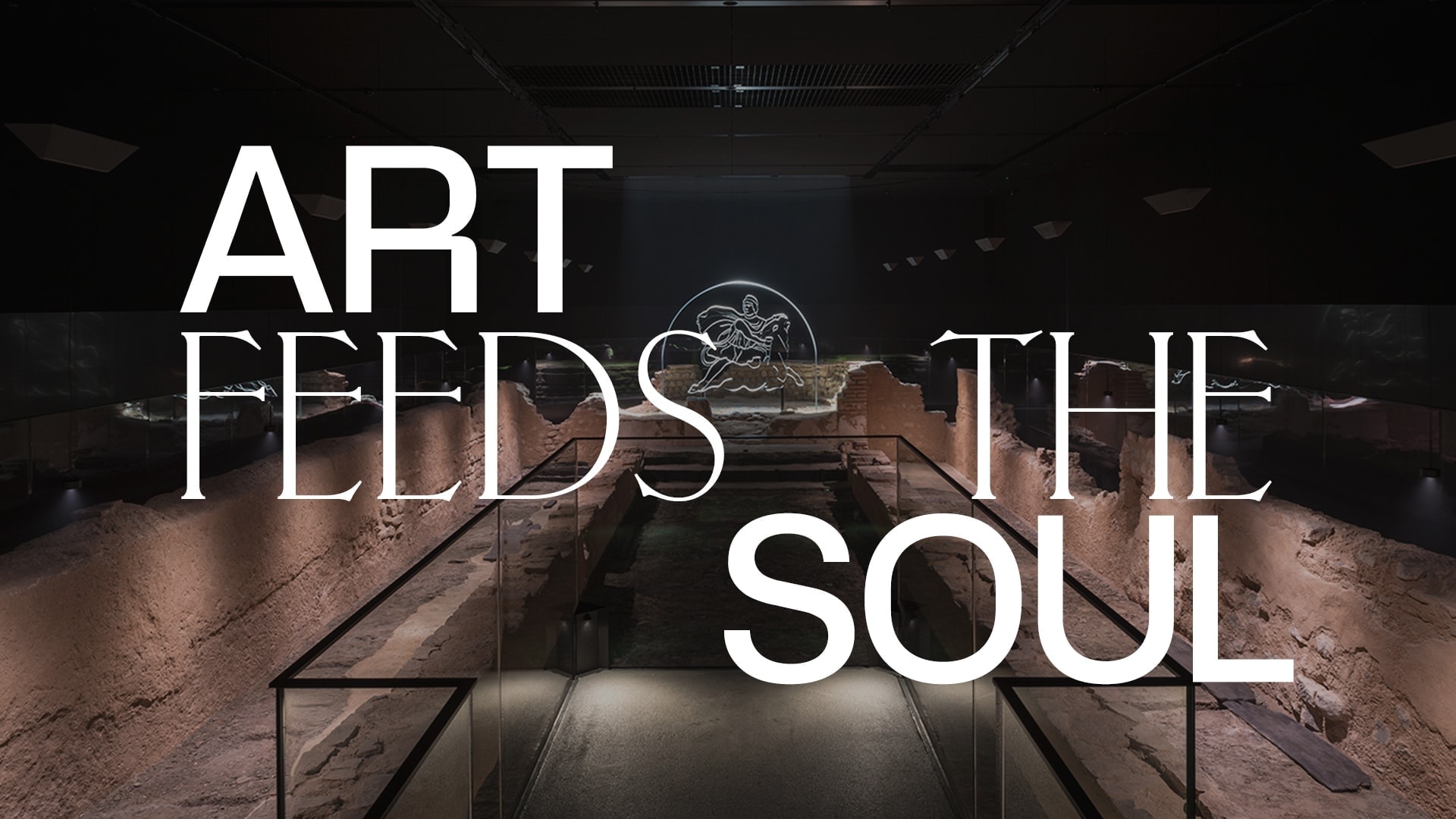

What is ‘Art Feeds The Soul’?
While discernible in ordinary life, there is no place in which the above quote by de Botton is more clear than in the art gallery – a place where even the most optimistic people are faced with questions of purpose.
This leaves little space in a gallery for art that is comfortable, that is familiar, and even less for art that is comforting. But the challenges of art can themselves be comforting. In this vein, we look at several pieces in permanent collections around London that are not necessarily easy to see, but that may be today’s apothecary for our existential needs.
Mithraeum of London
12 Walbrook, City of London, EC4N Mid-3rd Century

People queue to see the temple of Mithras in 1954
In what is sadly now one of the least enjoyable parts of London, the Old City, lies a small bastion of the past. Entirely surrounded by the glass, steel and suits of the big banks is the London Mithraeum, once a dark place of secret rituals for a Roman-era cult that worshipped the God Mithos. Now more than two storeys underground – what was fascinatingly street-level for the Romans – the ruins of this small temple have been painstakingly reconstructed.
Mid-2nd century Roman London, Artist: Judith Dobie (c) MOLA
It is, however, not in the room itself that the wits are stirred – though it is fascinating – but rather on the journey back up into the drilling and grilling of the City. The want for a time so, so far from our own is risible – but the selfish desire for old London to be the narrow alleyways, seedy taverns, East End streets or six-storeyed timbered tenement houses with projecting jetties, or old city gates and walls, is unending.


1960s reconstruction of the Roman Temple of Mithras
The Mithraeum’s sense of secrecy, hidden under London for nearly two millennia and only discovered after the destruction of the Blitz ripped open arteries of London never before seen, does exactly what good ‘art’ should do. I went there expecting a simple harking back to Roman London, to walk out, and to carry on as before – slyly pissed off that I was not in a London where I was in constant danger of having a bucket of shit disembogued onto me. This made me realise my own shallow hypocrisies.
Hidden under London for nearly two millennia, the Mithraeum does exactly what good ‘art’ should do.
In this case: I ‘longed’ for a time hundreds of years ago, that however romantic it now seems, was evidently troubled, filled with disease, riddled with crime, and more socially backward than can even be imagined. In brief, longing for a time I should really not be longing for. In this, I was maybe a little more appreciative of the bankers, the buses, and the birds, than frustrated that I would not bump into Samuel Pepys or the Kray twins as I emerged from the depths.


